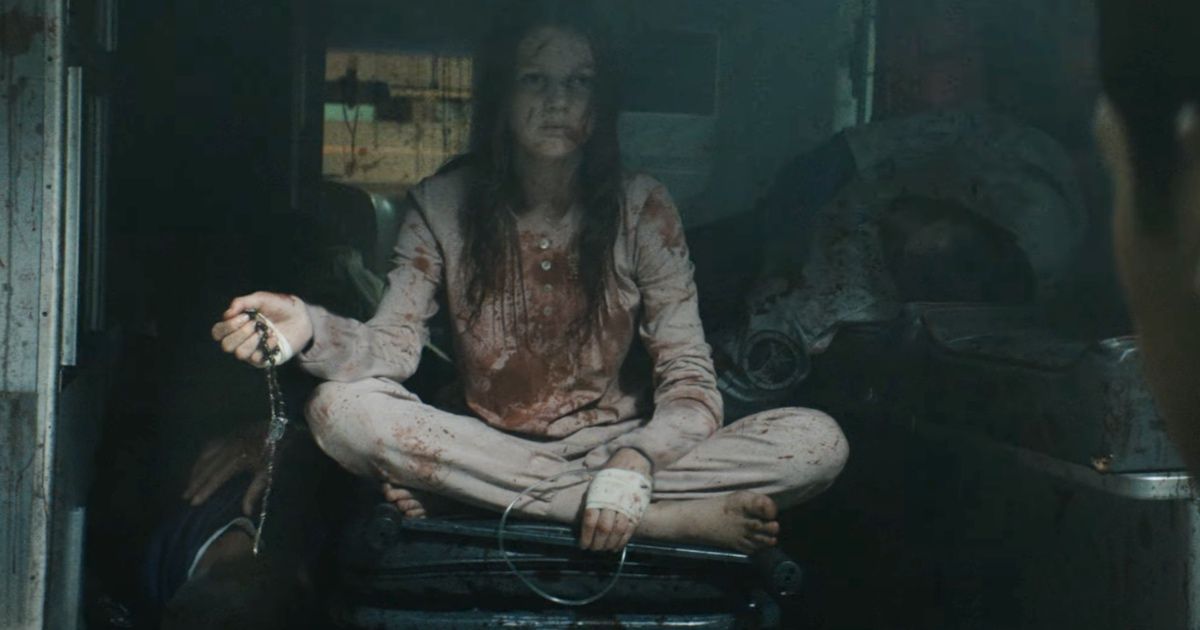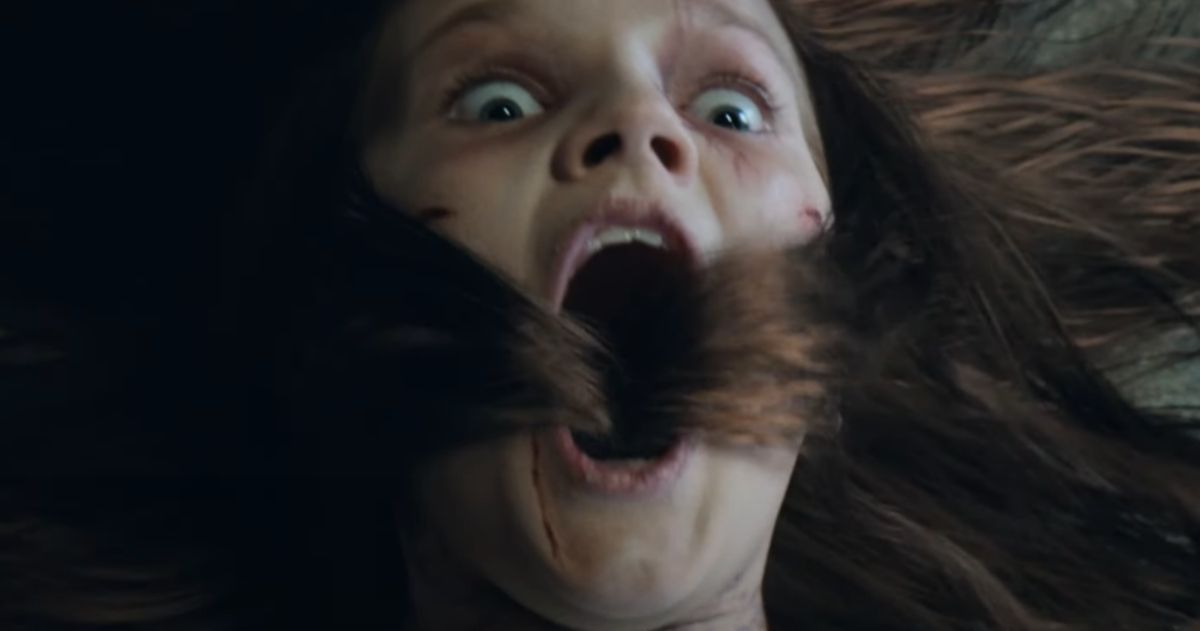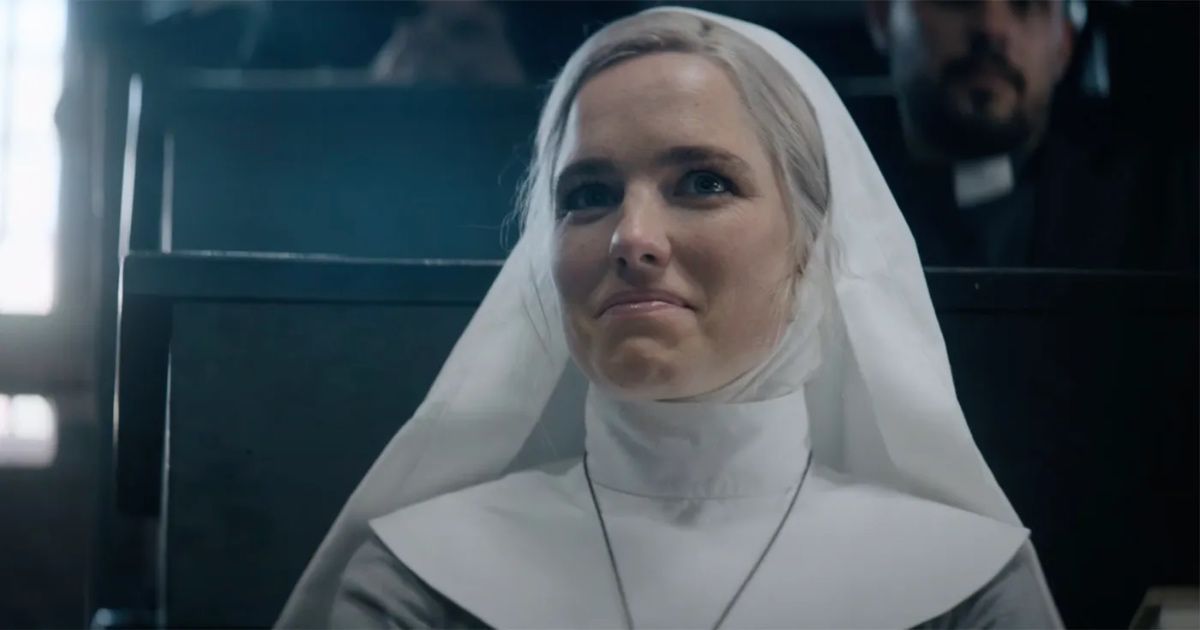A director known for his ability to thrill. A former sitcom writer who went on to pen Halloween: H20. The producer behind the Pitch Perfect success. Daniel Stamm (Them, The Last Exorcism), Robert Zappia (Home Improvement, Jackass 3D), and Paul Brooks (My Big Fat Greek Wedding, Pitch Perfect), join creative forces and go the distance in Prey For The Devil, a new thriller that’s generating buzz for its compelling protagonist: Sister Ann (Jacqueline Byers).
Sister Ann is no ordinary nun though. She believes she’s answering a divine call to be the first female exorcist—a good thing because in Prey For The Devil, there’s a global rise in demonic possessions. Can Sister Ann find a place among her fellow priests in an exorcism school that just opened, and will she be an effective spiritual warrior on the holy battlefield for human souls?
Stamm thought so.
“Having a female protagonist in an exorcism movie like this changes everything,” the director said. “In a script, you're always looking for the sources of conflict, because that fuels the story. Typically, you’d have a priest as the protagonist, and it’s the priest against the demon. Very different here. A nun who wants to perform an exorcism? And the church doesn't let her, so now she has to take on the entire patriarchy and earn the right to be allowed to perform the exorcism? That was unique to me. First, she must battle the church and a male God, before going up against the demons. It made everything much richer.”
Changing The Exorcism Flick Paradigm
Nearly 50 years after Linda Blair’s character turned her head in The Exorcist—and Ellen Burstyn delivered a bone-chilling portrayal of a desperate mother to boot—exorcism films have held audience’s interests. Stamm, who was born and raised in Hamburg, Germany, went from directing a documentary on rock musician Nick Cave to offering a compelling turn of his own behind the lens of The Last Exorcism, a box office hit. He said he was very intrigued with Prey For The Devil from the get-go.
“It was a mixture of the horror genre and the very cinematic approach that I thought could work,” Stamm said of the script. “The film strives to affect you viscerally through nightmarish images, sound, and through an atmosphere. I wanted to mix that with my first love, which is dramatic characters in a story—setting up characters that hopefully you care for so much that even if I were to pull out all the genre pieces, all horror set pieces, that you’d still care for those characters.”
Curiously, Stamm didn’t want to make another exorcism movie.
“It was just such a good script,” he said. “It was so different from what I’d done. I read it and was hooked. What's special about exorcism films, of course, is that the antagonist is different from other genres, like in a slasher movie. If you cut off a bad guy's head—done. You can go home; you’ve been victorious. In an exorcism movie, you can't do that, because you're trying to save the host body at the same time. You need to have a little more finesse.”
He went on to say that the symbolism is Prey For The Devil was significant—basically the horror of losing control of one’s own body.
Overall, he felt Byers and the film’s supporting characters crystallized.
“Colin Salman’s character, Father Quinn, represents the church but also the new era. Christian Navarro’s (13 Reasons Why), Father Dante, is Sister Ann’s friend and a supporter,” he explained. “But so many characters can't wrap their minds around what Sister Ann brings to the exorcism school. It's such an interesting backdrop because as a female protagonist/exorcist, she is more frightening to the church than any demon or any ‘devil’ could be. The church had a certain repertoire for millennia. Sister Ann changes everything in terms of storytelling.”
On The Film’s Special Effects
Canadian-based VFX company Folks handled the special effects in Prey For The Devil. Overall, the film isn’t overwrought by what the company delivered. Instead, audiences are offered a stellar balance of fright and horror when several possessed characters are seen climbing the walls or having their body contorted by an aggressive demon hell-bent—literally—on getting Sister Ann’s attention.
“You always try to do as much as possible on set, obviously, but that has real-life limits,” Stamm noted of the VFX. “We were the first project to go out during COVID and have a 9-year-old child actor. Normally, the stipulation with a child actor is having them about six hours on set. Well, here, that included all the makeup time, and all the breaks that they needed for homework, in between, and whatnot.”
That time was even cut down through COVID procedures. Stamm only had about four-and-a-half hours for make-up and scenes with actor Posey Taylor, who plays the possessed child, Natalie, in the film.
“I wouldn't have time left to actually shoot the scenes,” Stamm said. “And the scenes are pretty involved with rigging her on wires and all. So, we had to say from the beginning, that we were forced to do all that stuff digitally after we shot the scenes, which terrified me. I was not aware that we were in a budget level that was technologically advanced enough to achieve a realistic CGI look. I was worried if the effects would hold up because the biggest I’d ever seen them was during basic editing.
“But Folks really pulled it off,” he quickly added. “I saw the movie on a huge screen recently, and I was like, ‘Oh my God!’ It was wonderful. The VFX team did a marvelous job and, more importantly, made everything look very believable.”
Praising Jacqueline Byers
Canadian actress Jacqueline Byers had the huge task of morphing into a new kind of protagonist and tilting the exorcism film genre on its head here. Her Sister Ann has a storied history with “possession” and having to challenge the film’s priests, her character had a great deal to prove.
“Jackie was absolutely incredible. I didn't cast her and she’s one of the most memorable things about this movie. I wish I could take credit for it, but I can't, because I was the second director to come on the project, replacing a director who quit a week before pre-production started. I was sent Jackie's casting tape, with a note that said, ‘Here's an actress. We'd love it if you loved her.’” Which is exactly the sentence that a director doesn’t need to hear because you go, ‘I already hate that actress,’ then you go on a cast your own one because you think, ‘it’s my protagonist.’”
Naturally, Stamm watched the tape, thinking he’d cast another actress. But...
“Jackie was incredible. In those two minutes, she had the range you needed for the character, which is hard to come by,” he said. “On the one hand, she can convey this vulnerability; on the other hand, she can also transform that vulnerability into a rage and kick ass. And this role needed both things. You need to see she's terrified because if the protagonist isn't terrified, the audiences aren’t terrified. And Jackie did that and more within two minutes. She had me in tears by the end of the tape. Then we talked for hours on Zoom.”
Beyond Beyers, it’s interesting to note what Stamm feels audiences truly connect with in horror and exorcism films, in general.
“The benefit of horror films doesn't happen during the movie, like in a drama,” he explained. “It happens after the movie because you’ve basically put the audience through a near-death experience and our reptile brain reacts to the scares the same it would in the real world. It's a muscle that isn’t exercised anymore. We’re never scared in that way anymore—unless we see a horror movie and trick our brain into what life once was like thousands of years ago running away from Saber tooth tigers.
“But then when we come out of the theater, and there’s a breath of fresh air—'I'm still alive. I survived.’ It’s a life-affirming thing. I don't know of any other genre that does that.”
Prey For The Devil hits theaters on October 28.



